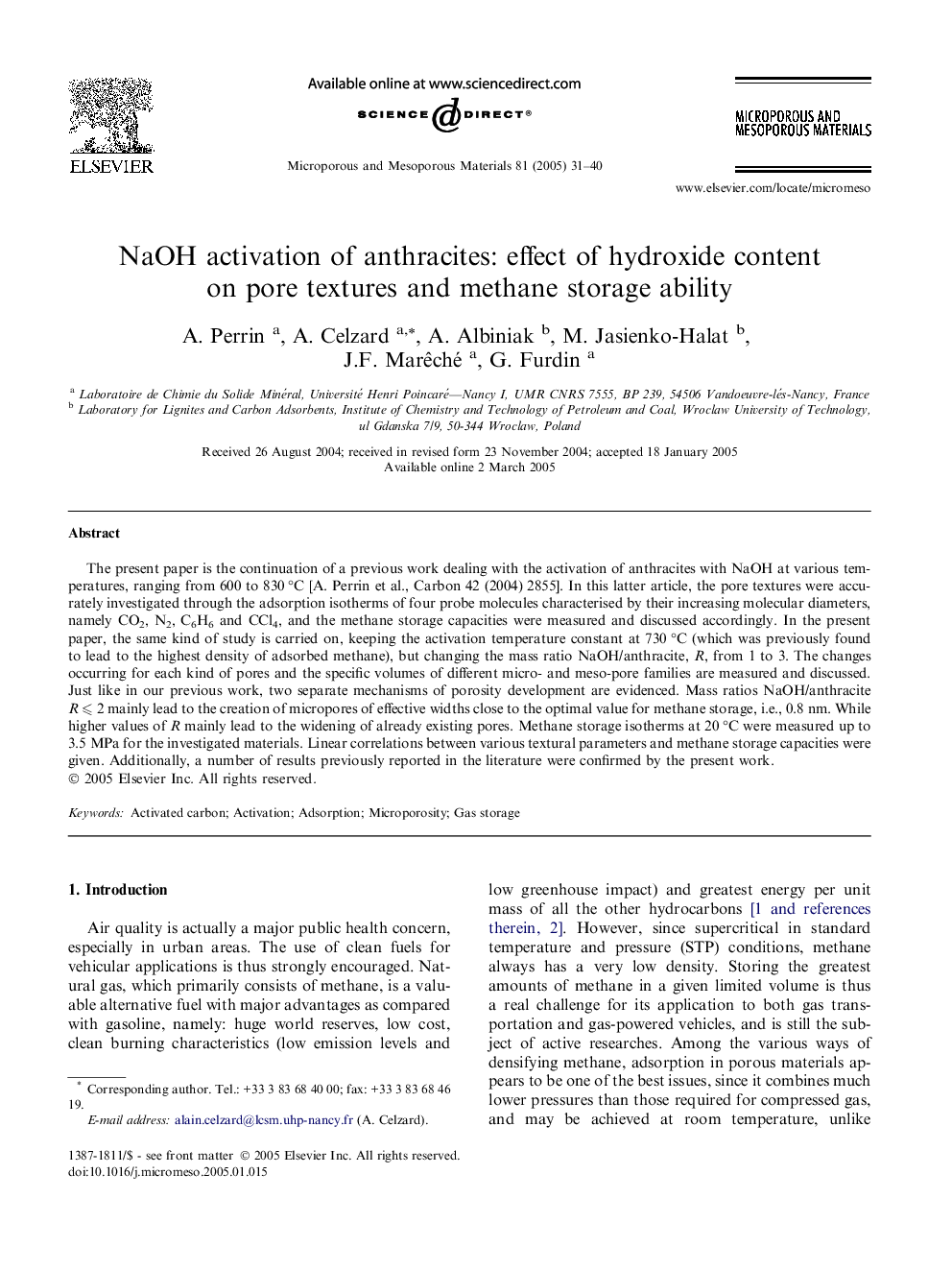| Article ID | Journal | Published Year | Pages | File Type |
|---|---|---|---|---|
| 9617694 | Microporous and Mesoporous Materials | 2005 | 10 Pages |
Abstract
The present paper is the continuation of a previous work dealing with the activation of anthracites with NaOH at various temperatures, ranging from 600 to 830 °C [A. Perrin et al., Carbon 42 (2004) 2855]. In this latter article, the pore textures were accurately investigated through the adsorption isotherms of four probe molecules characterised by their increasing molecular diameters, namely CO2, N2, C6H6 and CCl4, and the methane storage capacities were measured and discussed accordingly. In the present paper, the same kind of study is carried on, keeping the activation temperature constant at 730 °C (which was previously found to lead to the highest density of adsorbed methane), but changing the mass ratio NaOH/anthracite, R, from 1 to 3. The changes occurring for each kind of pores and the specific volumes of different micro- and meso-pore families are measured and discussed. Just like in our previous work, two separate mechanisms of porosity development are evidenced. Mass ratios NaOH/anthracite R ⩽ 2 mainly lead to the creation of micropores of effective widths close to the optimal value for methane storage, i.e., 0.8 nm. While higher values of R mainly lead to the widening of already existing pores. Methane storage isotherms at 20 °C were measured up to 3.5 MPa for the investigated materials. Linear correlations between various textural parameters and methane storage capacities were given. Additionally, a number of results previously reported in the literature were confirmed by the present work.
Related Topics
Physical Sciences and Engineering
Chemical Engineering
Catalysis
Authors
A. Perrin, A. Celzard, A. Albiniak, M. Jasienko-Halat, J.F. Marêché, G. Furdin,
